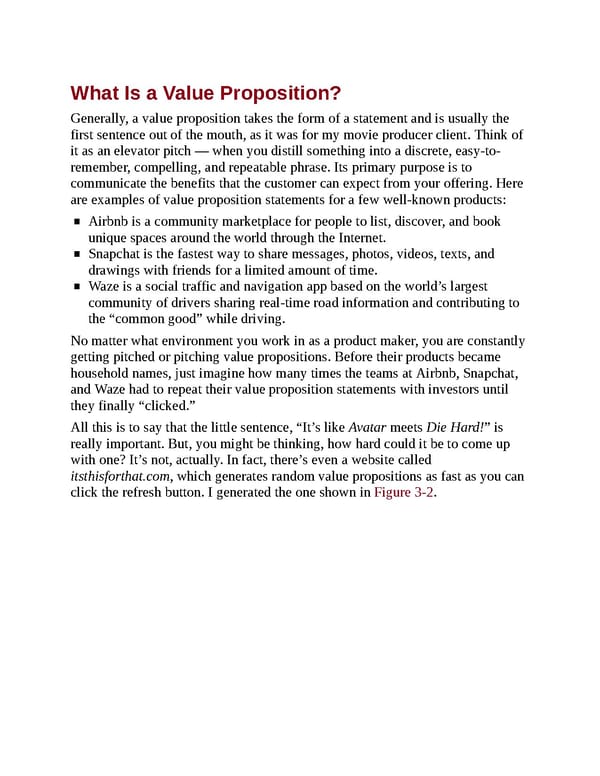What Is a Value Proposition? Generally, a value proposition takes the form of a statement and is usually the first sentence out of the mouth, as it was for my movie producer client. Think of it as an elevator pitch — when you distill something into a discrete, easy-to- remember, compelling, and repeatable phrase. Its primary purpose is to communicate the benefits that the customer can expect from your offering. Here are examples of value proposition statements for a few well-known products: Airbnb is a community marketplace for people to list, discover, and book unique spaces around the world through the Internet. Snapchat is the fastest way to share messages, photos, videos, texts, and drawings with friends for a limited amount of time. Waze is a social traffic and navigation app based on the world’s largest community of drivers sharing real-time road information and contributing to the “common good” while driving. No matter what environment you work in as a product maker, you are constantly getting pitched or pitching value propositions. Before their products became household names, just imagine how many times the teams at Airbnb, Snapchat, and Waze had to repeat their value proposition statements with investors until they finally “clicked.” All this is to say that the little sentence, “It’s like Avatar meets Die Hard!” is really important. But, you might be thinking, how hard could it be to come up with one? It’s not, actually. In fact, there’s even a website called itsthisforthat.com, which generates random value propositions as fast as you can click the refresh button. I generated the one shown in Figure 3-2.
 UX Strategy: How to Devise Innovative Digital Products that People Want Page 56 Page 58
UX Strategy: How to Devise Innovative Digital Products that People Want Page 56 Page 58